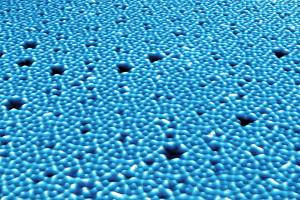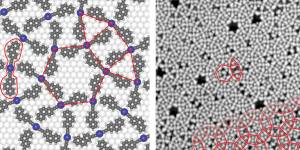Complex Tessellations, Extraordinary Materials
Floor parquetings are typically found in living rooms. But microstructured parquetings, or rather tessellations, may occur in materials as well. Materials with tessellations can, for example, be characterized by an outstanding electrical conductivity, a special light reflection, or an extreme mechanical strength. Selective generation of such structures requires large molecular building blocks which mostly are not compatible with the conventional manufacturing processes. In Nature Chemistry, researchers of KIT and TUM explain how molecules form complex tessellations through self-organization.
The team of Karlsruhe Institute of Technology (KIT) and Technische Universität München (TUM) has discovered a reaction path which produces exotic layers with semiregular structures from simple two-dimensional networks. Such materials are interesting because they often possess extraordinary properties. In the process, simple organic molecules are combined into larger components which form the complex semiregular patterns.
Only a few basic geometric shapes lend themselves to covering a surface without overlaps or gaps using uniformly shaped tiles: Triangles, rectangles, and hexagons. Considerably more and significantly more complex but still regular patterns are possible with two or more tile shapes. These are the so-called Archimedean tessellations or tilings.
Complete text: Press release 05/2018
aba/kes, 23.01.2018


